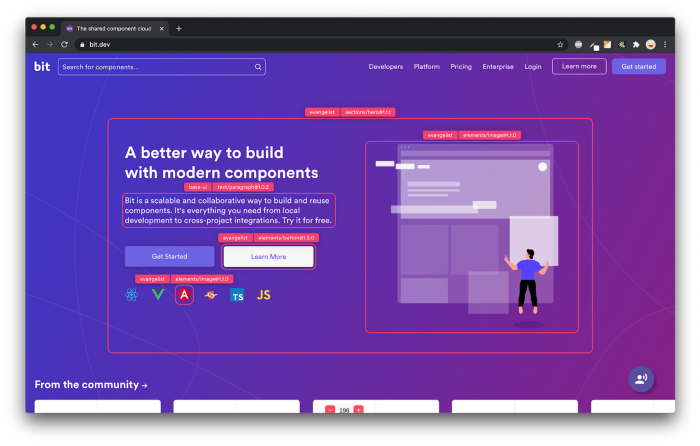

Module Federation vs Single-SPA
source link: https://blog.bitsrc.io/module-federation-vs-single-spa-47da53b67ed0
Go to the source link to view the article. You can view the picture content, updated content and better typesetting reading experience. If the link is broken, please click the button below to view the snapshot at that time.

Module Federation vs Single-SPA
A Comparative Analysis for Implementing Micro Frontend in Angular, React and Vue.js

comparison
Micro frontends are a popular way to build large, complex web applications by breaking them down into smaller, more manageable chunks.
These chunks, also known as modules, can be developed, tested, and deployed independently of one another, allowing teams to work on different parts of the application in parallel.
Two popular approaches to implementing micro frontends are module federation and single-spa. Both have their own advantages and disadvantages, and the choice between them will depend on the specific needs of your project.
Module Federation
Module federation is a way to share and reuse modules across different webpack builds. It works by creating a central “entry” point for each module, which can then be imported and used by other modules.
This allows for easy sharing of code and dependencies across teams, and makes it easy to update or replace individual modules without affecting the rest of the application.
One of the main advantages of module federation is that it allows for a more modular and decoupled architecture. Each module can be developed and tested independently of the others, making it easier to make changes and fix bugs without affecting the rest of the application.
Another advantage of module federation is that it allows for better code reuse. By sharing code across modules, teams can avoid duplicating effort and reduce the overall size of the application.
When using module federation with Angular, React, or Vue JS frameworks, it’s important to note that each module must be built using the same framework. This can be a limitation for teams that are using different frameworks within the same application.
Single-spa
Single-spa is a JavaScript library that allows for the creation of micro frontends within a single web application.
It works by creating a “shell” application that loads and manages different micro frontends as they are needed. This allows for a more modular and decoupled architecture, similar to module federation.
One of the main advantages of single-spa is that it allows for a more flexible architecture.
Because each micro frontend is a standalone application, teams can use different frameworks and libraries within the same application. This can be especially useful for teams that are using different frameworks within the same application.
Another advantage of single-spa is that it allows for better performance. By only loading the micro frontends that are needed at a given time, single-spa can reduce the overall size of the application and improve load times.
When using single-spa with Angular, React, or Vue JS frameworks, it’s important to note that each micro frontend must be built as a standalone application. This can be more complex than using module federation, but it allows for more flexibility and better performance.
Core Differentiating Points
The main difference between module federation and single-spa is the way they handle the sharing and reuse of modules. Module federation uses a central “entry” point for each module, while single-spa uses a “shell” application to load and manage different micro frontends.
Another key difference is the flexibility of the architecture. Module federation requires that all modules be built using the same framework, while single-spa allows for the use of different frameworks within the same application.
In terms of performance, module federation can be more efficient when sharing code across modules, while single-spa can be more efficient when loading and managing micro frontends.
Finally, when using module federation with Angular, React, or Vue JS frameworks, it is important to note that each module must be built using the same framework, while single-spa allows for the use of different frameworks within the same application.
Conclusion
In conclusion, both module federation and single-spa are popular approaches to implementing micro frontends in web applications. Both have their own advantages and disadvantages, and the choice between them will depend on the specific needs of your project.
Module federation allows for easy sharing of code and dependencies across teams, and makes it easy to update or replace individual modules without affecting the rest of the application.
Single-spa allows for a more flexible architecture, with the ability to use different frameworks within the same application. It also allows for better performance by only loading the micro frontends that are needed at a given time.
Ultimately, the choice between module federation and single-spa will depend on the specific requirements of your project and the needs of your team.
Build Apps with reusable components, just like Lego
Bit’s open-source tool help 250,000+ devs to build apps with components.
Turn any UI, feature, or page into a reusable component — and share it across your applications. It’s easier to collaborate and build faster.
Split apps into components to make app development easier, and enjoy the best experience for the workflows you want:
→ Micro-Frontends
→ Design System
→ Code-Sharing and reuse
→ Monorepo
Recommend
About Joyk
Aggregate valuable and interesting links.
Joyk means Joy of geeK
